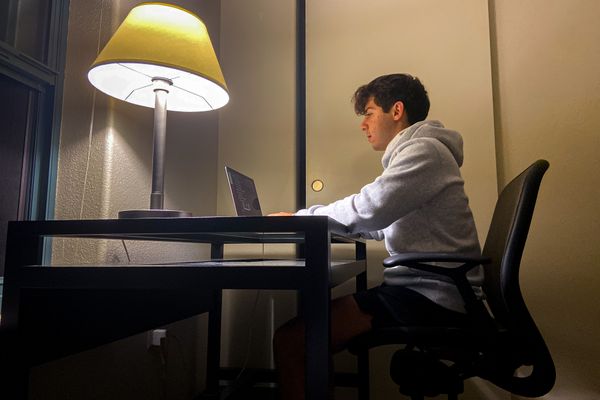Stanford Digital Education released a report highlighting opportunities for innovation in virtual education, based on lessons from the rise in remote learning driven by the COVID-19 pandemic.
The team found notable changes in Stanford’s identity, student-faculty relationships, and access to education for different students. Entitled “Lessons from Teaching and Learning at Stanford during the COVID-19 Pandemic: A Review 2020-21,” the report is the culmination of over 12 months of work.
The authors, Associate Director of Educational Partnerships Lisa J. Anderson and Associate Director of Project Management for Stanford Digital Education Cindy Berhtram, emphasized that this research is part of an ongoing conversation about the growth of digital education. They hope the report will serve as a starting point for further discussions with the Stanford community.
Key takeaways of the report included a loss of connection between faculty and students and the creation of instructional innovation and collaborative networks. They also noted the development of “a culture of empathy” which consisted of growing compassion in the classroom leading to “a stronger culture of mutual respect across the institution” in the report.
The report also highlighted some important statistics: 60% of first-generation/low-income students reported they didn’t have a quiet place to study during the pandemic, 50% of students reported feeling overwhelmed often or very often in spring 2020 and 66% of students were concerned with maintaining friendships while online.
The authors wrote that their findings should be used to find “what select areas we need to embrace and push further new digital education approaches and tools that will provide viable and welcome alternatives to face-to-face classes.”
According to the report, the authors’ goals were to “collect, record and catalog Stanford stories” that would help contextualize the future of education at the University, especially after the rise of remote learning in recent years.
The 87-page report “documents the resilience, creativity and compassion that blossomed at Stanford in the face of a pandemic that upended our educational practices,” wrote University Provost Persis Drell, who called for this report in fall 2021.
The investigation was conducted in two phases. The first phase was an analysis of internal Stanford reports, policy papers and articles through University Communications, The Stanford Daily and other secondary digital resources. The second phase focused on interviews with 59 Stanford community members including university leadership, faculty, staff and students.
The report is divided into four chapters, each outlining different responses to the pandemic: innovations in pedagogy, changing support structures, the development of professional communities, emphasis on supporting the whole student and a final section that outlines the pandemic learnings as a whole.
Co-author Berhtram said that this project involved “colleagues all over the country and all over the world.” She told The Daily that the team is “trying to get the word out” about their findings, sharing their methodology publicly so other institutions can replicate their process.
Stanford Digital Education presented pieces of this report at Duke University and plans to present the findings at EDUCAUSE, the Online Learning Consortium and the Northwest Academic Technology Conference.
Despite already conducting interviews, Stanford Digital Education reiterated that this was an ongoing discussion.
Instead of a list of recommendations, the report offered a series of unanswered questions to the University. This includes how Stanford can use digital education to enhance equity and access to educational opportunities, as well as under what circumstances virtual pedagogy should be used in the classroom.
“What I will say about it is that it’s not an exhaustive research study; you can think of it more of an oral history project,” said co-author Anderson. “We’re hoping to share the report across the Stanford community. We’re hoping that it’ll serve as a starting point for community conversations.”
Vice Provost for Digital Education Matthew Rascoff extended a similar invitation to the Stanford community. “We view this as kind of a beginning, not an end,” he said.
“It is designed to be open… we want to support discussions and open forums and town halls. It’s a real leadership opportunity for us as the university, it’s an entrepreneurial opportunity for students,” Rascoff said.
A previous version of this article incorrectly stated that the Stanford Digital Education Strategy Group released the report. The Daily regrets this error.
